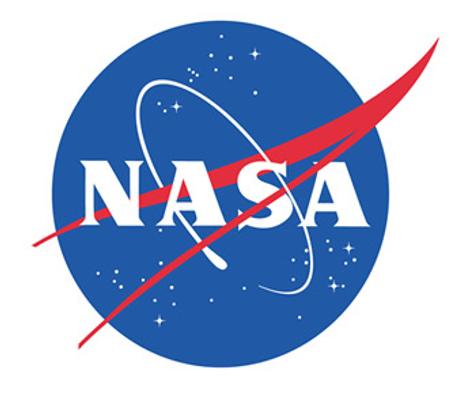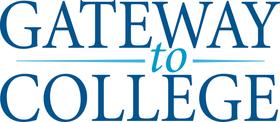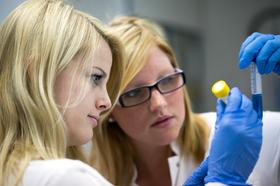A number of community college students from around the country are headed to NASA to help design robotic rovers for Mars exploration. The 92 students chosen for the project were carefully selected after participating in interactive online assignments throughout the school year. They will be headed to a NASA center this spring to complete their tasks. The National Community College Aerospace Scholar program designed the project, with sponsorship from NASA, and will include students from 24 different states across the country.
This video discusses the NASA Community College Aerospace Scholars program.
The Purpose of the Program
According to a press release on the NASA website, the program is based on the Texas Aerospace Scholars program, which was originally created as a partnership between the state’s education community and NASA. The purpose was to get more students excited about STEM areas of study, particularly science and engineering. This particular project, through the National Community College Aerospace Scholar program and NASA, is designed to offer hands-on opportunities in STEM fields that will inspire more students to enter those fields after they finish college.
“I am so proud of the Community College Aerospace Scholars program,” Leland Melvin, NASA’s associate administrator for education, stated in the press release. “Community colleges offer NASA a great pool of STEM talent critical to our scientific and exploration initiatives. They also serve a large portion of our nation’s minority students. Engaging these underserved and underrepresented learners in STEM initiatives helps NASA build a more inclusive and diverse workforce for the future.”
This video describes the expansion of the National Community College Aerospace Scholar program.
The Selection Process
Community colleges across the country advertised the opportunity to work with NASA on this project through campus newsletters and other outlets. Those who were interested could apply through their schools. If their applications were accepted, the community college students were given their homework assignments. Rhode Island news station WPRI, which reported on a Community College of Rhode Island student and mother who was selected for the project, talked about the type of work students had to do before getting accepted into the program.
“I had to design a robotic mission to Mars,” Jodi Perron told WPRI. “My mission to Mars included two Delta rockets,” Perron added.
Perron explained that she had to create an abstract, a proposal, a timeline, and a budget for her mission through interactive assignments provided by NASA. She spent countless hours researching and designing her mission. However, the more she studies, the more excited she became about the prospect of working for NASA.
“Since I was in middle school, I was infatuated with NASA,” Perron told WPRI. “I always thought the work they do is very exciting.”
The Choice of Rover Missions
Students who applied for the program were able to select their specific missions and design their rovers around their mission. Another student selected was Alexis Nelson of Imperial Valley College in Arizona. Nelson, a single parent and nursing student at IVC, designed a plan that would introduce plant life on Mars. She took four online classes through the NASA Aerospace Scholar program as she was designing her rover before being accepted to the project.
“One of my objectives was to try to introduce plant life on Mars so that when we do try to have a manned mission, we can sustain them with oxygen,” Nelson told KSWT News. “It’s like having a Mars greenhouse on Mars and seeing how plants actually handle Mar because they have simulations here, but actually do it and see how they’ll develop and grow.”
Nelson reiterated the need for a timeline and budget in her project, as well as the rover design itself. She explained to KSWT News, ”We had to draw one with all the specifications and how it was going to get power, how long it was going to be there.” Nelson added, “So when we actually have to go to NASA we’re going to be doing some different robotics missions with little rovers so we can kind of simulate how it would be like on Mars.”
Nelson is one of the students heading to Texas this spring, and she is very excited about the opportunity. She told KSWT, “I’m really excited to get the chance to go to NASA in Texas and get to work with the engineers and astronauts and tour the facilities and learn more about the different missions, especially the Mars mission.”
What Happens Next
The Sacramento Bee reports that the students selected for the program will be traveling to one of two NASA facilities later this spring. Some of the students will head to NASA’s Jet Propulsion Laboratory in Pasadena, California, from May 1-3, while the rest will go to NASA’s Johnson Space Center in Houston, Texas, from May 9-11. Both teams will create fictional companies that specialize in Mars exploration. The students will then design and build a Mars rover prototype, which they will use to navigate a course and collect water and rocks before returning to a home base.
In addition to their work on the rovers, students will have the opportunity to tour the NASA facilities and hear briefings from agency scientists and engineers. According to Mars Daily, the program hopes to bring more qualified candidates into the technical fields in the upcoming years, as many of the science and engineering fields have seen gaps in qualified employees coming out of college in recent years. The NASA program is just one more step on the road to building a trained workforce in the fields of science and engineering that will be prepared to compete in a global market throughout the 21st century.
Questions? Contact us on Facebook. @communitycollegereview














